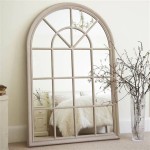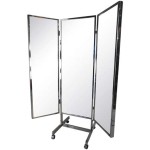Mirrored Shadow Box Case Study: Enhancing Display and Perception
Mirrored shadow boxes represent a fascinating intersection of design, presentation, and psychological perception. These display cases, characterized by mirrored backdrops and often featuring intricate construction, serve a dual purpose: protecting valuable objects and amplifying their visual impact. This article delves into a comprehensive case study examining the application, advantages, and potential drawbacks of utilizing mirrored shadow boxes across various scenarios.
The mirrored shadow box is more than a simple container; it acts as a stage. By reflecting the contents and surrounding environment, it creates an illusion of greater depth and volume, drawing the observer's eye and prompting closer inspection. This makes them particularly effective for displaying small or singular items that might otherwise be overlooked. The study will explore the strategic use of mirrored surfaces within these boxes, considering materials, placement, and lighting to maximize their aesthetic and functional qualities. From showcasing collectibles and memorabilia to presenting retail products and artistic creations, the analysis will cover a wide spectrum of applications, offering insights into how mirrored shadow boxes can elevate the perceived value and appeal of displayed objects.
Understanding the Psychological Impact of Mirrors in Display
The human fascination with mirrors extends far beyond simple vanity. Mirrors have been used throughout history in art, architecture, and adornment, often imbued with symbolism and cultural significance. In the context of display, the use of mirrors triggers several key psychological responses. The reflection creates a sense of completeness, suggesting a more comprehensive view of the object than is actually provided. This is particularly useful for items with intricate details or multiple facets, allowing viewers to perceive aspects that might otherwise be hidden from view. The mirrored backdrop effectively doubles or even multiplies the visual presence of the object, making it appear larger, more significant, and more desirable.
Furthermore, mirrors contribute to a sense of dynamism and movement, even in static displays. As the viewer shifts their perspective, the reflected image changes, creating a subtle sense of animation that draws the eye and maintains interest. This dynamic interaction is especially valuable in retail settings, where capturing and holding the attention of potential customers is paramount. However, it's crucial to consider the potential for distraction. Overuse of mirrors or improper placement can create visual clutter, overwhelming the viewer and detracting from the displayed object. The key is to strike a balance, using mirrors strategically to enhance, rather than detract from, the overall presentation.
The case study will examine specific examples of how the psychological impact of mirrors has been leveraged in different display settings. This includes analyzing color palettes used in conjunction with mirrored surfaces, considering the reflectivity of various materials, and assessing the impact of lighting angles on the overall visual experience. By understanding the underlying psychological principles at play, designers and curators can harness the power of mirrored shadow boxes to create truly captivating and impactful displays.
Case Studies Across Different Sectors
To thoroughly understand the application of mirrored shadow boxes, the study examines their use across diverse sectors, highlighting successful implementations and identifying potential areas for improvement. This comparative analysis will provide a comprehensive overview of the versatility and adaptability of these display cases.
Retail: In retail, mirrored shadow boxes are frequently employed to showcase high-end jewelry, luxury watches, and exclusive collectibles. The reflection enhances the sparkle and shine of these items, creating an aura of exclusivity and desirability. For example, a high-end watch retailer might use a mirrored shadow box with strategically placed lighting to highlight the intricate details of a timepiece, emphasizing its craftsmanship and value. The study will analyze the use of mirrored shadow boxes in different retail environments, considering factors such as store layout, target audience, and product characteristics.
Museums and Galleries: Museums and galleries often utilize mirrored shadow boxes to display delicate artifacts, historical documents, and miniature sculptures. The enclosed environment provides protection from dust, damage, and theft, while the mirrored backdrop adds depth and dimension to the presentation. A museum showcasing ancient coins, for instance, might use a mirrored shadow box to allow visitors to see both sides of the coin without physically handling it. The case study will explore the ethical considerations of using mirrored shadow boxes in museum settings, particularly in relation to authenticity and historical accuracy.
Art Galleries: Artists often use mirrored shadow boxes to display miniature works or to create installations that play with perspective and illusion. The mirrored surfaces can transform a small, self-contained piece into a larger, more immersive experience. One example is the use of a mirrored shadow box to display kinetic art, where the reflections amplify the movement and create a mesmerizing visual effect. The study will explore how artists are pushing the boundaries of mirrored shadow boxes to create innovative and thought-provoking works.
Residential Settings: Mirrored shadow boxes are also popular in residential settings for displaying personal collections, family heirlooms, and travel souvenirs. They provide a stylish and secure way to showcase these items, while also adding a touch of elegance to the home décor. An individual might use a mirrored shadow box to display a collection of vintage stamps, creating a visually appealing and organized display. The study will consider the aesthetic preferences of homeowners and the integration of mirrored shadow boxes into existing interior design schemes.
Each case study will provide specific examples of how mirrored shadow boxes have been used effectively, along with an analysis of the design choices, materials used, and the overall impact on the viewer. The study will also identify any potential drawbacks or challenges associated with using mirrored shadow boxes in each sector, such as glare, reflection issues, and maintenance requirements.
Designing and Constructing Effective Mirrored Shadow Boxes
Creating an effective mirrored shadow box requires careful consideration of various design and construction factors. The choice of materials, the placement of the mirror, the lighting, and the overall dimensions of the box all play a crucial role in the final outcome.
Material Selection: The materials used to construct the shadow box should be durable, aesthetically pleasing, and compatible with the displayed object. Common materials include wood, metal, acrylic, and glass. Wood provides a classic and elegant look, while metal offers a more modern and industrial aesthetic. Acrylic and glass are transparent materials that allow for unobstructed viewing of the object. The mirror itself can be either glass or acrylic, with different levels of reflectivity and durability. The study will analyze the pros and cons of each material, considering factors such as cost, weight, maintenance, and environmental impact.
Mirror Placement and Angle: The placement and angle of the mirror are critical to creating the desired effect. A flat mirror placed directly behind the object will create a simple reflection, while angled mirrors can create more complex and dynamic reflections. Multiple mirrors can be used to create the illusion of infinity or to showcase different perspectives of the object. The study will explore different mirror arrangements and their impact on the overall visual experience. It will also consider the potential for distortion and glare, and how to minimize these effects through careful design and placement.
Lighting Design: Lighting is essential for highlighting the object and creating the desired mood and atmosphere. Different types of lighting can be used, including LED, halogen, and incandescent. LED lighting is energy-efficient and produces minimal heat, making it ideal for sensitive objects. Halogen lighting provides a bright and focused light, while incandescent lighting offers a warm and inviting glow. The study will analyze the impact of different lighting techniques on the appearance of the object, considering factors such as color temperature, intensity, and direction. It will also explore the use of dimmers and other lighting controls to create a customizable display.
Dimensions and Proportion: The dimensions of the shadow box should be proportional to the size and shape of the object. A box that is too small will feel cramped and cluttered, while a box that is too large will make the object appear insignificant. The depth of the box should also be considered, as it will affect the amount of space available for the object and the lighting system. The study will provide guidelines for determining the optimal dimensions of the shadow box, based on the size and characteristics of the displayed object.
Beyond these core design elements, the study will also address practical considerations such as accessibility, security, and maintenance. The ease of opening and closing the box, the security of the object within the box, and the cleaning and maintenance requirements will all be taken into account. By addressing these practical concerns, the study aims to provide a comprehensive guide to designing and constructing effective mirrored shadow boxes.
The creation of a mirrored shadow box is not merely about assembling physical components; it involves understanding the interplay of light, reflection, and perception to create a captivating and meaningful display. This understanding will be emphasized through the case studies highlighted.

Mid Century Modern Shadow Box Mirror With Carved Roses Chairish

Model Maker Recreates Eerie Scenes In Miniature Within Shadow Boxes

Mid Century Modern Shadow Box Mirror With Carved Roses Chairish

Mid Century Modern Shadow Box Mirror With Carved Roses Chairish

Mid Century Modern Shadow Box Mirror With Carved Roses Chairish

How To Make A Stunning Shadow Box Cabinet With Compartment Diy Great Home Ideas

Mid Century Modern Shadow Box Mirror With Carved Roses Chairish

How To Make A Shadow Box Display Precious Possessions

Picture Frame Shadow Box My Repurposed Life

Picture Frame Shadow Box My Repurposed Life








